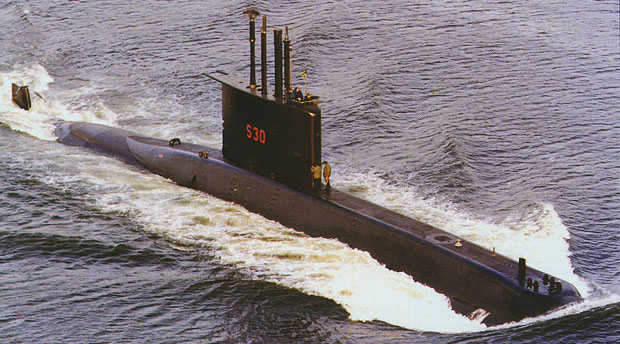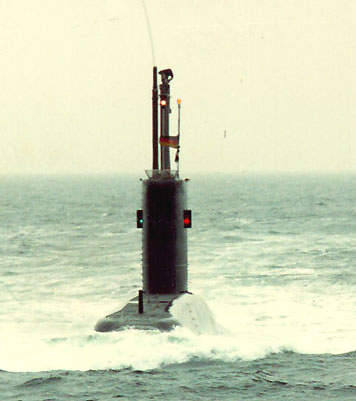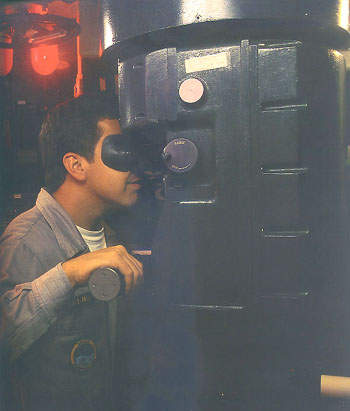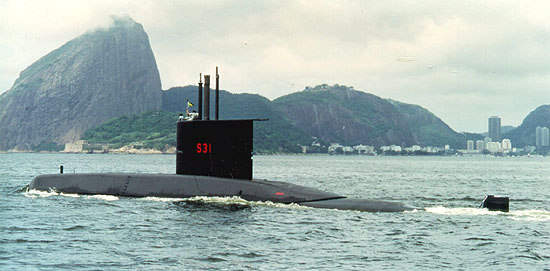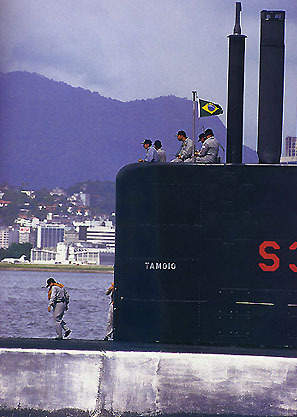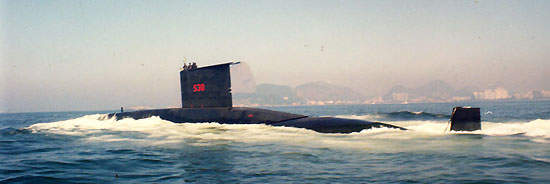The Brazilian Navy’s submarine force is based at Base Almirante Castro e Silva, Mocangue Island, which is near Niteroi, just across the bay to the east of Rio de Janeiro.
The first of class submarine, Tupi (S30), was designed and built in Kiel, Germany, by Howaldtswerke-Deutsche Werft (HDW) and commissioned into the Brazilian Navy in 1989. The Arsenal de Marinha naval shipyard in Rio de Janeiro constructed the Tamoio (S31), commissioned in 1994, Timbira (S32), commissioned in 1996, and Tapajo (S33), commissioned in 1999.
The Improved Tupi Class was to consist of two submarines – Tikuna (S34) and Tapuia. However, budget cuts by the Brazilian Ministry of Defence led to the cancellation of the Tapuia and a halt in construction of the Tikuna.
Tikuna was finally launched in March 2005 and commissioned in December 2005.
TUPI CLASS TORPEDOES
The Tupi and Tikuna are equipped with eight bow tubes fitted with a swim-out discharge system. 16 torpedoes are carried, eight in the tubes and eight ready for reloading. The Instituto de Pesquisas da Marhina (IPqM), the Naval Research Institute of the Brazilian Navy, has designed an anti-submarine torpedo which can be carried on the Tupi submarines. The torpedoes have a range of 18km and speed of 45kt.
The Tupi is also capable of launching the BAE Systems mk24 Tigerfish mod 1 or mod 27 torpedo. The Tigerfish has an acoustic seeker in the nose and is wire-guided. Data is downloaded from the submarine weapon control station to the torpedo’s onboard computer. The torpedo is armed with a 134kg PBXN 105 warhead from BAE Systems.
As the torpedo reaches to the target, a magnetic proximity fuse and an impact fuse detonates the warhead. The speed of the torpedo is 25kt in passive mode and 35kt to 50kt in active seeker mode. The range of Tigerfish is within 14km to 40km.
The Tikuna was to be armed with Saab Bofors Torpedo 2000 heavyweight torpedo. The initial contract for the torpedo, signed in 1999, was cancelled in September 2004. It can also be armed with MCF-01/100 acoustic-magnetic mines supplied by IPqM, which can be carried in lieu of torpedoes.
The submarine’s weapon control system is BAE Systems KAFS-A 10 control system.
In January 2008, Lockheed Martin Maritime Systems and Sensors was awarded a contract for five integrated combat systems for the Tupi and Tikuna Class submarines. The new combat system will enable firing the 30 mk48 mod 6 advanced technology torpedoes that were requested in September 2005.
COUNTERMEASURES
The radar warning receiver on the Tupi and the Tikuna is the DR-4000 supplied by Thales (formerly Thomson-CSF) of Malakoff, France. The DR-4000 is a modular electronic support measures system covering C to J-bands. The antennae include a single omnidirectional antenna surrounded by 12 directional antennae.
SUBMARINE SENSORS
The submarine is equipped with two mod 76 periscopes supplied by Kollmorgen. The I-band navigation radar is the Thales Calypso III.
The submarine’s hull-mounted sonar is the CSU-83/1 from Atlas Elektronik. The search-and-attack sonar operates at medium frequency in both active and passive modes. The cylindrical bow hydrophone array is passive and provides 360° coverage.
An active transducer array in the sail of the submarine provides a 30° coverage. The system also has three flank arrays on both the port and starboard sides and an intercept sonar.
PROPULSION
The Tupi Class submarines are powered by four 12V 493 AZ80 GAA31L diesel engines developed by MTU, four Siemens alternators rated at 1.8MW and a Siemens 3.4MW motor. The propulsion system provides a surface speed of more than 10kt and a submerged speed of 24kt.
The Improved Tupi (Tikuna) class submarine is equipped with very high-capacity batteries developed by Varta and featuring glass fibre-reinforced plastic lead acid battery cells. Propulsion is diesel-electric with four MTU 12V 396 diesel engines providing 2.76MW. This gives a 30% increased range compared to the four Tupi submarines. The Tikuna is capable of an 11,000-mile range surfaced at an economical speed of 8kt. The range at 4kt dived is in excess of 400 miles.

